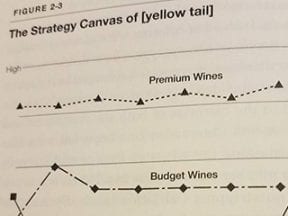The 5C marketing framework provides a structured way to evaluate and describe a business’s position in a market. The framework, applied consistently, could guide decisions as the business promotes its brand and products.
Ecommerce businesses — B2B wholesalers, direct-to-consumer brands, omnichannel retailers — may use the 5C framework to identify how to market, how to measure, and to whom, among other things.
The 5 C’s are “company,” “collaborators,” “customers,” “competitors,” and “context.” The initial step is to understand what each represents and how it might help your business’s marketing.

The 5C marketing framework can help a business understand its position in the marketplace.
Company
The first “C” is “company” — its purpose or advantage. What is your business’s sustainable competitive advantage or hedgehog concept?
The former, sustainable competitive advantage, describes “advantages anchored in industry economics…[that] fall into three categories: size in the targeted market, superior access to resources or customers, and restrictions on competitors’ options,” according to a September 1986 Harvard Business Review article by economist Pankaj Ghemawat.
The latter, a hedgehog concept, comes from Jim Collins’ book “Good to Great.” It describes the one thing your business can do better than anyone else and can make a profit from.
Identifying your company’s hedgehog concept or sustainable competitive advantage may also include conducting a SWOT analysis (strengths, weaknesses, opportunities, and threats ).
Once established, revisit your competitive advantage about every six months.
A company analysis should help identify key marketing messages and inform many of its promotional decisions.
Collaborators
The second “C” in a 5C marketing analysis is “collaborators.” These are other businesses, organizations, and individuals who make it possible for your company to do what it does.
In ecommerce, collaborators may be suppliers. For example, a DTC brand would consider its contract manufacturer as a collaborator. It might also include Amazon as a collaborator if the brand sells on that marketplace. A package carrier such as FedEx and UPS could also be a collaborator.
In this step, identify all collaborating partners. Think about how they impact your business and how your marketing campaigns might impact them.
Customers
Customers are among the most important “C’s” in the framework. Your task at this step is to hash out your ideal customer for a given product or campaign. This could involve creating customer personas and profiles. It might include conducting customer interviews.
Determine why that customer might buy from your company. What problem or need does your product solve?
It is important, also, to understand the marketplace in which those customers shop.
For example, several years ago an omnichannel retailer in the northwest U.S. thought it wanted to become the top seller of a particular brand of high-end boots.
The retailer’s marketing team identified the total available market (TAM), which describes all of the boots that can be sold. It defined the serviceable available market (SAM), which estimates how much of the TAM it could service based on its capabilities, and the share of market (SOM), which is the portion of the SAM it was likely to get.
It turned out, the retailer was already the second-largest seller of this particular boot by volume, and the marketing investment needed to become the top seller would reduce its profit.
This phase of the 5C analysis will sometimes include plotting customers on a marketing-specific Boston Consulting Group Matrix, which can help a business decides if it should invest money to increase sales from a specific customer group.
Competitors
The fourth “C” is “competitors.” Identify their strengths and weaknesses, market share, and apparent marketing strategy.
This step sometimes includes determining a “concentration ratio,” which is a way of gauging how competitive a specific market may be, thus possibly indicating how hard it would be for your business to compete.
Some companies use their competitive analysis to establish a Blue Ocean Strategy, as described in “Blue Ocean Strategy: How to Create Uncontested Market Space and Make the Competition Irrelevant,” a book by W. Chan Kim and Renée Mauborgne, which I’ve addressed.
Context
The final “C” in the framework is “context” (or “climate”). It is the analysis of everything else in the world that can impact your business and its marketing.
For example, in 2020 the global pandemic has had a huge impact on ecommerce and marketing.
To help identify and define your business’s context, you might use a PESTEL analysis, which examines these factors:
- Political,
- Economic,
- Social,
- Technological,
- Environmental,
- Legal.
A PESTEL analysis in 2020 could uncover, in addition to Covid-19, political and social trends that may impact how shopper data is collected when browsers no longer allow tracking cookies. This could make some forms of marketing attribution much more difficult. A savvy ecommerce business might change how it measures advertising as a result.



